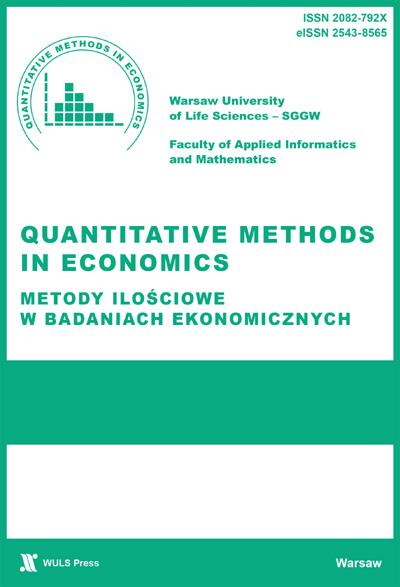Main Article Content
Article Details
Anderson D., Botman D., Hunt B. (2014) Is Japan’s Population aging Deflationary? IMF Working Paper 14/139, August. (Crossref)
Ando A., Modigliani F. (1963) The ‘Life-cycle’ Hypothesis of Saving: Aggregate Implications and Tests. American Economic Review, 53(1), 55-84.
Bloom D. E., Canning D. (2006) Demographic Challenges, Fiscal Sustainability and Economic Growth. PGDA Working Papers 0806, Program on the Global Demography of Aging.
Bullard J., Garriga C., Walker C. J. (2012) Demographics, Redistribution, and Optimal Inflation. Federal Reserve Bank of St. Louis Review, November/December 2012, 94(6), 419-39. (Crossref)
Faik J. (2012) Impacts of an Ageing Society on Macroeconomics and Income Inequality – TGE Case of Germany since the 1980s. Society for the Study of Economic Inequality Working Paper Series No. 2012-272, Society for the Study of Economic Inequality, Verona. (Crossref)
Gajewski P. (2016) Is Ageing Deflationary? Some Evidence from OECD Countries. Applied Economics Letters, 22(11), 916-919. (Crossref)
Juselius M., Takáts E. (2015) Can Demography Affect Inflation and Monetary Policy? BIS Working Papers, 485.
Juselius M., Takáts E. (2016) The Age-structure-inflation Puzzle. Bank of Finland Research Discussion Paper 4/2016. (Crossref)
Katagiri, M., Konishi H., Ueda K. (2014). Aging and Deflation from a Fiscal Perspective. Federal Reserve Bank of Dallas, Globalization and Monetary Policy Institute, Working Paper, 218. (Crossref)
Konishi H., Ueda K. (2013) Aging and Deflation from a Fiscal Perspective. IMES Discussion Paper Series, 2013-E-13.
Kotowska I. E., Jóźwiak J. (2012) Nowa demografia Europy a rodzina. Roczniki Kolegium Analiz Ekonomicznych, 28/2012, 9-33 (in Polish).
Lindh T., Malmberg B. (2000) Can Age Structure Forecast Inflation Trends? Journal of Economics and Business, 52, 31-49. (Crossref)
Macura M., MacDonald A. L., Haug W. (eds.) (2005) The New Demographic Regime. Population Challenges and Policy Responses. United Nations, New York and Geneva.
McMillan H., Baesel J. (1990) The Macroeconomic Impact of the Baby Boom Generation. Journal of Macroeconomics 12, 167-195. (Crossref)
Shirakawa M. (2011a) Bubbles, Demographic Change and Natural Disasters. Opening Speech at 2011 Annual International Conference hosted by the Institute for Monetary and Economic Studies, the Bank of Japan, June 1.
Shirakawa M. (2011b) Globalization and Population Aging: Challenges Facing Japan. Speech to the Board of Councillors of Nippon Keidanren, December 22.
Shirakawa M. (2012) Demographic Changes and Macroeconomic Performance: Japanese Experiences. Opening Remark at 2012 BOJ-IMES Conference hosted by the Institute for Monetary and Economic Studies, the Bank of Japan, May 30.
Shirakawa M. (2013) Toward Strengthening the Competitiveness and Growth Potential of Japan’s Economy. Speech at the Executive Member Meeting of the Policy Board of Nippon Keidanren, Tokyo, 28 February.
Yoon J.-W., Kim J., Lee J. (2014) Impact of Demographic Changes on Inflation and the Macroeconomy. IMF Working Paper 14/210, November. (Crossref)
Downloads
- Marcin Halicki, Tadeusz Kwater, THE FOSTER-HART FORMULA FOR CASES OF SUPPLY CHAIN PROJECTS WITH VARIOUS CONSTRAINTS , Metody Ilościowe w Badaniach Ekonomicznych: Tom 20 Nr 1 (2019)
Możesz również Rozpocznij zaawansowane wyszukiwanie podobieństw dla tego artykułu.
Publikowane artykuły dostępne są na warunkach Open Access na zasadach licencji Creative Commons CC BY-NC – do celów niekomercyjnych udostępnione materiały mogą być kopiowane, drukowane i rozpowszechniane. Autorzy ponoszą opłatę za opublikowanie artykułu.





